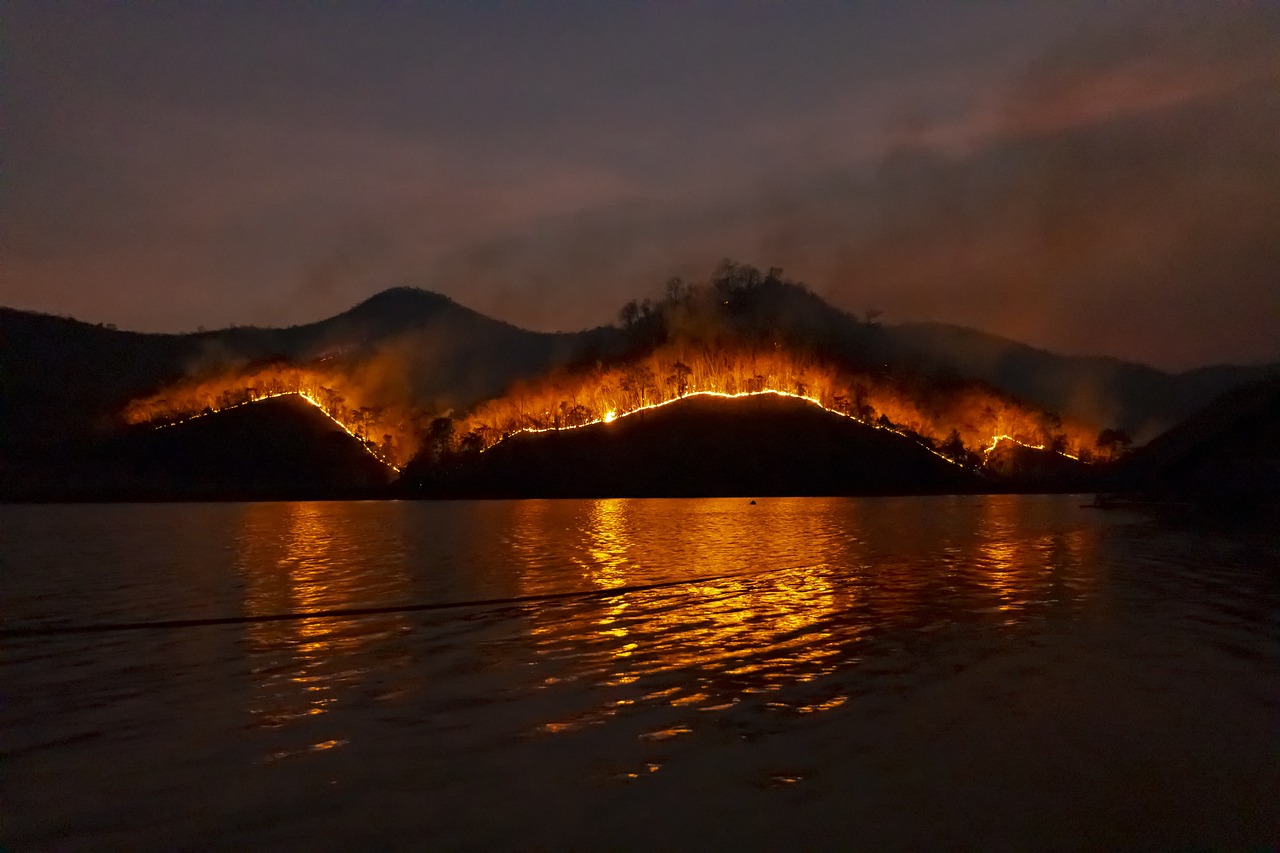A study published in the revista Trends in Ecology & Evolution by research staff from the Desertification Research Center (CIDE), a joint center of the Higher Council for Scientific Research (CSIC), the University of Valencia (UV) and the Generalitat Valenciana, proposes, for the first time, a conceptual framework for the study of the ecology of fire in the marine environment explaining How forest fires affect marine ecosystems.
Scientists from the Biodiversity and Conservation Research Group (BIOCON) of the ECOAQUA Institute, belonging to the University of Las Palmas de Gran Canaria, collaborate in the work.
Los forest fires They are one of the main ecological disturbances of various terrestrial ecosystems such as boreal forests, temperate forests, Mediterranean shrublands, tropical savannahs and grasslands.


In these ecosystems, an important part of the byproducts generated by forest fires (ash, smoke and sediments) reach the ocean by land through runoff and rivers, and by atmosphere, through aerosols.
With global warming, foreseeable trends point to a global increase in fire activity, which will result in greater deposition in marine ecosystems of materials related to fires. forest fires. However, understanding the impact of these disturbances on these ecosystems, both on water quality and marine biota, is still anecdotal and requires further analysis.
Forest fires have a significant impact on ocean ecology
“It is expected that the forest fires have a significant impact on the ocean ecology. Specifically, we expect wildfire byproducts to increase nutrient transport from land to sea, alter marine chemistry and carbon and nutrient cycling, as well as phytoplankton productivity, and have both positive and negative effects. , in the oceanic biota, from microbes to mammals,” explains Juli G. Pausas, CSIC researcher at CIDE who leads this work.
Prominent examples of these effects include those caused by extensive forest fires 1997 in Indonesia, which caused red tides that spread throughout the Indonesian archipelago for two months.
These red tides, accompanied by oxygen depletion, caused significant mortality of phytoplankton, zooplankton, and benthic (bottom-dwelling) organisms, and were considered responsible for coral mortality that occurred throughout a 400 kilometer stretch in the Mentawai Islands.
During the australian fires In 2019 and 2020, the released aerosols, rich in iron, initiated a prolonged bloom of phytoplankton in the South Pacific Ocean, which lasted 4 months, surpassing previous records and generating great carbon fixation.
Quantifying the direct effects on various species, such as fish, corals and plankton, would allow us to better understand the dynamics of marine ecosystems after the firesand thereby expand the spectrum of analysis and open the possibilities of increasingly differentiated studies.
It would also be important to delve deeper into the functional and adaptive responses of the different species that occupy these habitats to better understand the mechanisms that maintain biodiversity in fire-prone marine ecosystems.
These investigations are essential to guide conservation efforts and recovery strategies for these ecosystems, as well as to evaluate the potential of the oceans to mitigate emissions from emissions. forest fires.
The oceans: sinks for forest fire emissions
Approximately 6% of the carbon sequestered in marine sediments is of pyrogenic origin, that is, from the carbonized compounds generated during the fires that flow from the ground through rivers to reach the oceans. “The deposition and accumulation of these compounds have significant implications for the carbon cycle, functioning as a geological carbon sink for long periods of time,” says Pausas.
Quantifying the role that marine microbes and phytoplankton play in capturing carbon emissions from forest fires It is also a crucial, if underexplored, field of research.
Delving deeper into this area would not only improve the understanding of global biogeochemical cycles, but would help fine-tune the global carbon balance. “It is essential to integrate this aspect into global carbon models and, at the same time, improve our ability to quantify the transfer of carbon to the ocean through runoff and sedimentation,” explains Rodrigo Riera, BIOCON researcher at the ECOAQUA Institute of the University of Las Palmas de Gran Canaria.
For all this, “we must address the fire ecology in the marine environment to understand in depth the impact of forest fires on our planet. This would enrich our knowledge of the interconnected systems that make up the Earth,” concludes Pausas. In this framework, the fire ecology in marine systems constitutes an area of research with great future projection.

